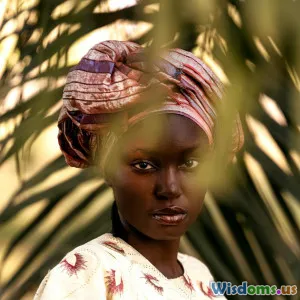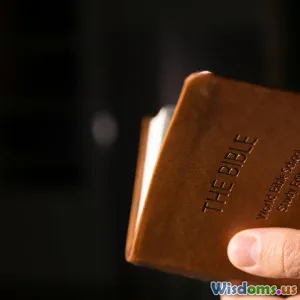
The Impact of Literary Diversity
7 min read Explore how literary diversity enriches culture, broadens perspectives, and empowers communities worldwide. (0 Reviews)
The Impact of Literary Diversity
Introduction
Imagine walking into a library where every shelf reflects a unique culture, every story challenges conventional norms, and every character resonates with diverse identities. This is the vision and reality that literary diversity brings to the world of books and literature. As global societies become increasingly interconnected, the push for diverse literary voices has not only expanded the horizons of readers but also redefined cultural conversations and social understanding. In this article, we delve deep into the transformative impact of literary diversity, exploring its benefits, challenges, and pivotal role in shaping modern literature.
Defining Literary Diversity
Literary diversity encompasses the inclusion of a wide range of voices, perspectives, and stories in literature—especially those from historically marginalized, underrepresented, or minority communities. It includes diversity in authorship, narrative themes, characters’ backgrounds, language, and cultural contexts. Far beyond tokenism, true literary diversity portrays authentic experiences, nuances, and complexities that enrich storytelling.
Why Literary Diversity Matters
Empowering Marginalized Voices
For decades, mainstream literature primarily reflected dominant cultural narratives. This limited representation marginalized many groups' stories and experiences. Literary diversity disrupts this pattern by empowering voices from Black, Indigenous, People of Color (BIPOC), LGBTQ+ communities, disabled individuals, and other minorities.
A powerful example is Tommy Orange’s There There, which centers on urban Native American lives, challenging stereotypes and highlighting a modern Indigenous experience often ignored in mainstream fiction. This empowerment fosters self-identity, pride, and recognition for marginalized groups.
Enriching Empathy and Understanding
Books serve as windows into worlds otherwise unknown to readers. Diverse literature expands readers’ emotional and cognitive horizons, fostering empathy. A 2017 study by UCLA indicated that fiction readers develop increased empathy for people unlike themselves, and this effect is stronger with exposure to diverse characters and narratives.
For instance, Angie Thomas' The Hate U Give explores police violence and systemic racism in the United States, helping readers from various backgrounds confront uncomfortable realities and cultivate empathy for affected communities.
Challenging Stereotypes and Prejudices
Literary diversity exposes readers to authentic portrayals that challenge simplistic or harmful stereotypes. By presenting complex characters and varied cultural experiences, diverse literature dismantles one-dimensional views and reduces prejudice.
The success of Americanah by Chimamanda Ngozi Adichie illustrates this — her novel explores Nigerian identity, immigration, and race in America, thereby confronting misperceptions about African cultures and diaspora experiences.
The Economic and Cultural Ripple Effects
Expanding Market Demand
Industry data suggests that diverse books not only fill a crucial societal need but also drive book sales. Nielsen Book Research reported a 20% increase in diverse book sales between 2015 and 2019. Publishers increasingly acknowledge that inclusivity attracts broader audiences, which translates into commercial success.
Influencing Other Media and Education
Diverse literature influences film, television, theater, and education curricula. For example, the adaptation of The Hate U Give into a major motion picture broadened its cultural reach. Educational institutions are integrating diverse books into their syllabi to better reflect students’ realities and promote inclusiveness.
Barriers to Literary Diversity
Despite progress, challenges persist. Systemic barriers in publishing, such as limited access to industry networks for minority authors and biases in acquisition processes, still hinder representation. According to Lee & Low Books’ Diversity Baseline Survey (2020), people of color represented only around 12% of publishing industry employees.
Moreover, some critics claim diversity efforts compromise literary quality — a misconception debunked by critical acclaim and commercial performance of numerous diverse works.
Steps Toward Greater Inclusion
Support Diverse Authors and Publishers
Readers can actively seek works by marginalized authors and support independent presses focusing on diverse literature, such as Kaya Press, and independent bookstores championing cultural variety.
Educational Reform and Outreach
Schools and libraries play a pivotal role by diversifying recommended reading lists and providing access to inclusive literature. Programs like We Need Diverse Books promote this by awarding grants and advocating for policy changes.
Industry Awareness and Accountability
Publishing houses are increasingly adopting diversity initiatives, shadowing editorial pipelines, and mentorship programs to nurture diverse talent.
Conclusion
The impact of literary diversity transcends the written word—it molds culture, fosters empathy, combats prejudice, and strengthens communities. By embracing an array of voices and stories, literature fulfills one of its highest callings: to reflect the fullness of human experience. For readers, educators, industry professionals, and creators, the imperative is clear — champion diversity not just as a trend but as a lasting foundation for richer, more inclusive storytelling.
The world’s most profound stories are those that reflect the vibrant mosaic of humanity. In recognizing and advocating for literary diversity, each of us plays a part in shaping a literary landscape where every voice has the power to enlighten, inspire, and connect.
Rate the Post
User Reviews
Popular Posts





















